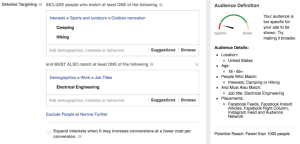When the last jobs report of 2023 was released on Friday, it confirmed that the labor market is still going strong, with 216,000 jobs added in December and the unemployment rate holding steady at 3.7%. That brought the total number of jobs added over 2023 to about 2.7 million—a drop from the record highs of 2021 and 2022, but nevertheless a stronger showing than economists had anticipated.
For certain workers, however, the outlook is more complicated. Disabled workers have long faced greater barriers to employment, but much like the rest of the labor force, they have seen significant gains over the past two years, with more than 7.7 million workers employed as of December 2023. Over the past year, the labor-force-participation rate among disabled people has jumped from 23.6% to 24.5%—a major increase from pre-pandemic figures, which hovered around 20%. At the same time, unemployment across the disabled workforce has climbed from an all-time low of 5% in December 2022 to a current rate of 6.7%.
The relatively higher rates of employment among disabled workers can be explained in large part by the rise of remote work, which has benefited workers who might have previously struggled to find in-person jobs that accommodated their disabilities. Even as many companies have pushed for a return to in-person work, data from the Bureau of Labor Statistics (BLS) indicates that 1.8 million disabled people worked remotely in some capacity in December 2023. (That’s up from nearly 1.3 million in December 2022.) But experts say there could be another reason for this shift. According to the BLS, nearly a million more people identify as disabled now than in December 2022, perhaps driven by the upswing in long COVID cases. (In September, a report by the CDC found that 7% of adults in the U.S. had been impacted by long COVID.)
“Remote work does provide more access for disabled people; however, there are a lot of disabled people who don’t have jobs that are available for remote work, [like] lower-paid, in-person work,” says Mia Ives-Rublee, the director of the Disability Justice Initiative at the Center for American Progress. “One of the things we’re concerned about is that there has been an increase in disability. So we wonder if some of the increase [in employment] is due to the fact that people were working before they became disabled, [then] they became disabled and now count as disabled workers.”
As for the rate of unemployment, experts say it’s hard to know what the future holds, between broader labor market trends and the ongoing challenges facing disabled workers. During 2023, unemployment among disabled workers fluctuated from a high of 8.2% to a low of 6.3%—and while the current rate of employment (6.7%) is an increase year-over-year, it’s also a decrease from 7.3% in November 2022. “Part of that is just volatility in the labor market,” says Amy Traub, a senior researcher and policy analyst at the National Employment Law Project. “With more folks in the labor force, unemployment often comes up because people are looking for jobs.”
Still, labor-force participation among disabled workers remains far lower than overall figures: Their unemployment rate is nearly twice the unemployment rate for all U.S. workers. Even with the gains disabled workers have made over the past few years, these figures are a reflection of the unique hurdles to employment they experience relative to the average worker. “It’s really up to employers to do right by workers with disabilities and recognize everything that [they] can bring to a job,” Traub says.
(6)






